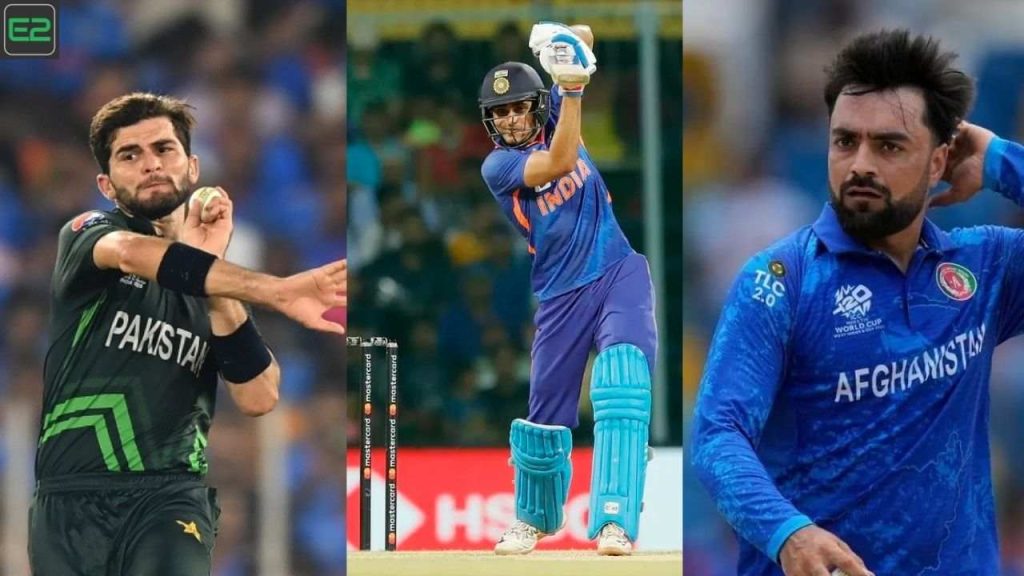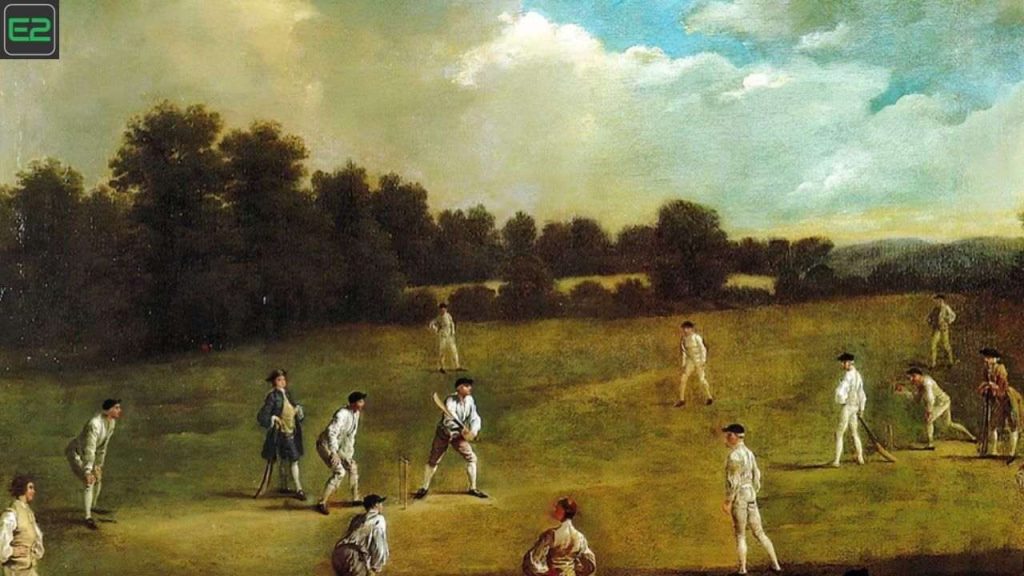6: In the world of cricket, jersey numbers are more than just a way to distinguish players on the field—they can become iconic symbols that represent legacies, moments of brilliance, and unforgettable performances. Among the myriad numbers worn by players, the number 6 stands out. This number has been associated with some of the most remarkable cricketers in history, and its influence stretches across formats, from Tests to One-Day Internationals (ODIs) and T20s. In this article, we will explore the significance of the jersey number 6 in cricket, its cultural impact, and some of the greatest cricketers who have donned this number.
The Cultural and Emotional Significance of Number 6

In many sports, certain jersey numbers hold special meaning. For instance, in football, the number 10 is often associated with the team’s creative genius, while the number 7 is considered a symbol of flair. In cricket, 6 is a number that is widely regarded as one of power, consistency, and match-changing performances.
The number 6 is particularly symbolic in the context of cricket because it is tied to the idea of hitting the ball out of the park—literally. The “six” is the highest score a batsman can hit from a single delivery in cricket. When a player wears the number 6 on their back, it often evokes thoughts of big hits, exciting finishes, and a player who can turn the game on its head.
Legendary Cricketers Who Wore the Number 6
Throughout cricket’s rich history, several players have worn the jersey number 6 with great pride. Some have made significant contributions to their teams while others have created unforgettable moments. Below, we dive into the careers of some of the greatest cricketers who have worn this iconic number.

| Player | Number of Matches Played | Notable Achievements |
|---|---|---|
| Shane Warne | 145 Tests, 194 ODIs | Widely regarded as one of the greatest leg spinners in cricket, Warne’s creativity and flair on the field made him an icon. His legendary performances in Ashes series are unforgettable. |
| Sir Ian Botham | 102 Tests, 116 ODIs | Botham was a batting all-rounder who played a pivotal role in many of England’s iconic cricketing victories. He was known for his ability to change the course of the game in both batting and bowling. |
| Dinesh Karthik | 26 Tests, 94 ODIs | Karthik’s versatility as a wicketkeeper and batsman, along with his match-winning performances, earned him a place in Indian cricketing history. He was a key player during India’s rise in the late 2000s. |
| Ricky Ponting | 168 Tests, 375 ODIs | One of the most successful captains in cricket history, Ponting’s leadership and batting prowess made him an Australian cricketing legend. He is known for his aggressive approach. |
| Sourav Ganguly | 113 Tests, 311 ODIs | Ganguly is considered one of India’s greatest captains and one of the finest left-handed batsmen to play the game. He was pivotal in shaping the aggressive, youthful India team of the early 2000s. |
1. Shane Warne (Australia)

Shane Warne is perhaps the most famous cricketer to wear the number 6 jersey. As one of the greatest bowlers the world has ever seen, Warne’s influence on the game cannot be overstated. His mesmerizing leg-spin, ability to read the game, and his fierce rivalry with many top batsmen set him apart. Warne was a key figure in Australia’s dominance in the 1990s and 2000s, contributing significantly to their Ashes victories and World Cup successes.
2. Sir Ian Botham (England)

Ian Botham is another cricketer whose legacy is intrinsically linked to the number 6. As one of the greatest all-rounders of all time, Botham could change the course of a match with both bat and ball. His fearless approach to the game, combined with his ability to deliver in pressure situations, made him an invaluable asset to the England cricket team.
3. Dinesh Karthik (India)

Dinesh Karthik’s versatility and resilience have earned him respect as one of the most adaptable players in modern cricket. Known for his wicketkeeping and lower-order batting, Karthik played numerous match-winning knocks for India. While he may not have the same high-profile career as some others, his number 6 jersey is a testament to his importance in Indian cricket’s resurgence in the 2000s.
4. Ricky Ponting (Australia)

Ricky Ponting, an Australian cricketing legend, wore the number 6 jersey with distinction throughout his career. As a captain, Ponting led Australia to multiple World Cup titles and was part of the dominant Australian side of the early 2000s. His aggressive style of batting, particularly in ODIs, and his leadership in both formats made him one of the best to have played the game.
5. Sourav Ganguly (India)

Sourav Ganguly’s tenure as captain of India is legendary, and his number 6 jersey symbolizes his iconic leadership. Under his guidance, India moved away from the conservative approach and became more aggressive, particularly in foreign conditions. His ability to turn games around with his bat and captaining style earned him the nickname “Dada,” and he remains one of India’s most beloved cricket figures.
Number 6 and the Symbolism of Big Hits
The number 6 in cricket is also associated with the famous “six” hit, a feat that has become symbolic of a player’s ability to take the game by the horns and change its course with a single shot. The cricket “six” has become a symbol of power and aggression, and players wearing the number 6 often remind fans of the sheer ability to dominate the game.
Players like Chris Gayle, MS Dhoni, and Shahid Afridi are known for their prolific six-hitting. Their impact on cricket goes beyond their ability to clear the boundary; they embody the fearless nature of players who aim to finish matches in spectacular fashion. For cricketers with the number 6 on their backs, this symbolism is often a powerful reminder of their destructive potential.
Top Six-Hitters of the Modern Era
| Player | Total Sixes Hit (International Cricket) | Highest Record (Sixes in a Match) |
|---|---|---|
| Chris Gayle | 533 | 16 (ODI against South Africa, 2005) |
| MS Dhoni | 366 | 10 (ODI against New Zealand, 2009) |
| Shahid Afridi | 351 | 11 (T20I against West Indies, 2013) |
| Mark Waugh | 270 | 6 (Test match against New Zealand) |
| Yuvraj Singh | 251 | 6 (T20 World Cup against Australia, 2007) |
The Future of Number 6 in Cricket
As cricket continues to evolve, the number 6 will undoubtedly retain its prominence in the sport. Young players entering international cricket will look to the likes of Shane Warne and Ricky Ponting for inspiration. The ability to wear this number comes with a responsibility—one to play with pride, aggression, and consistency.
Moreover, the ever-growing trend of T20 cricket has added a new layer to the significance of the number 6. Players in this format, often expected to hit big shots and finish matches with flair, will increasingly identify with the “powerful” six as part of their own identity.
The number 6 in cricket is much more than just a number—it’s a symbol of power, match-changing moments, and legendary performances. Whether it’s through the elegance of Shane Warne’s spin, the all-round brilliance of Ian Botham, or the six-hitting prowess of modern players like Chris Gayle, the number 6 has etched itself deeply into cricket’s history. As cricket continues to grow and evolve, it’s clear that the legacy of this iconic number will live on for generations to come.













